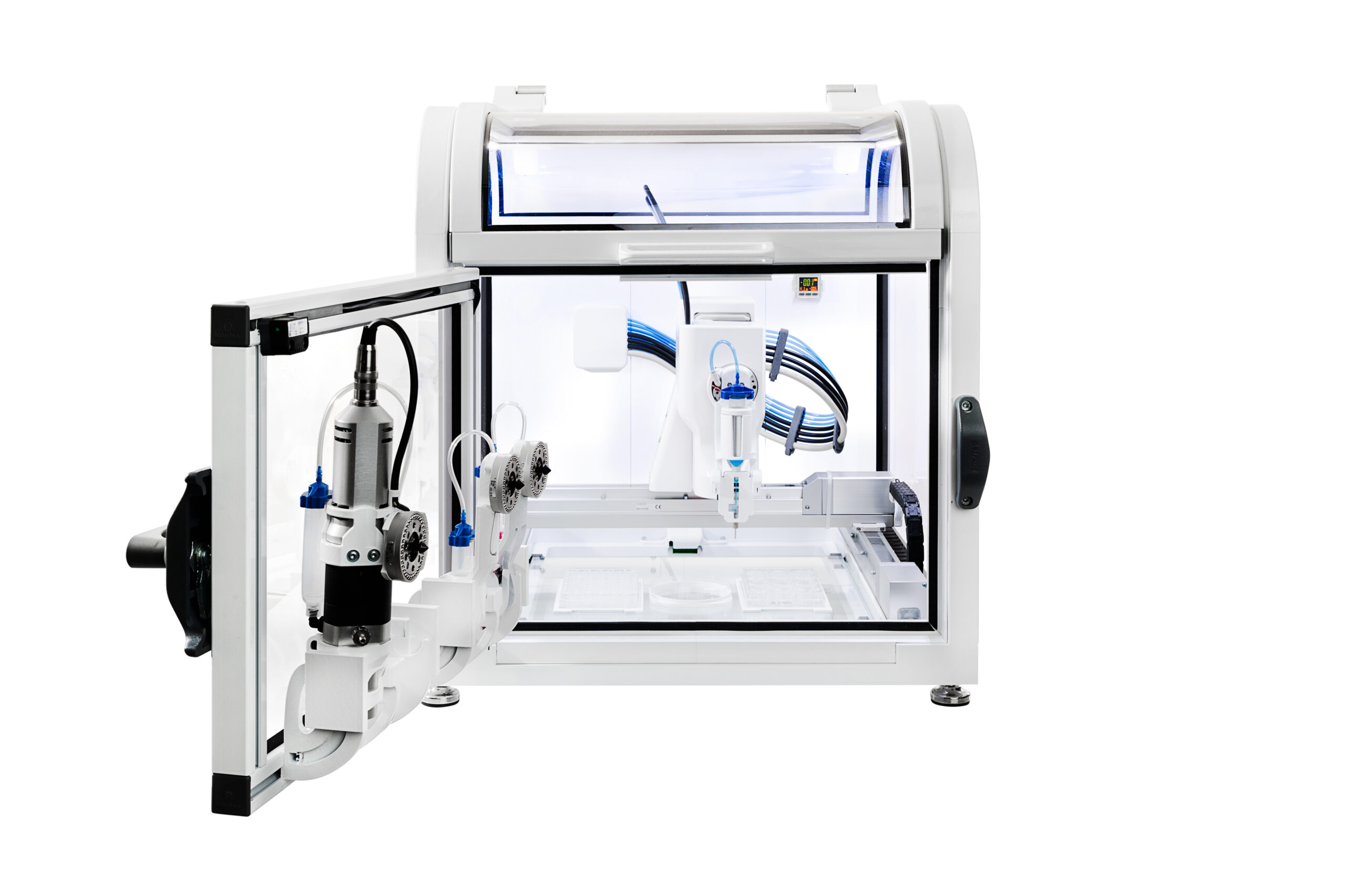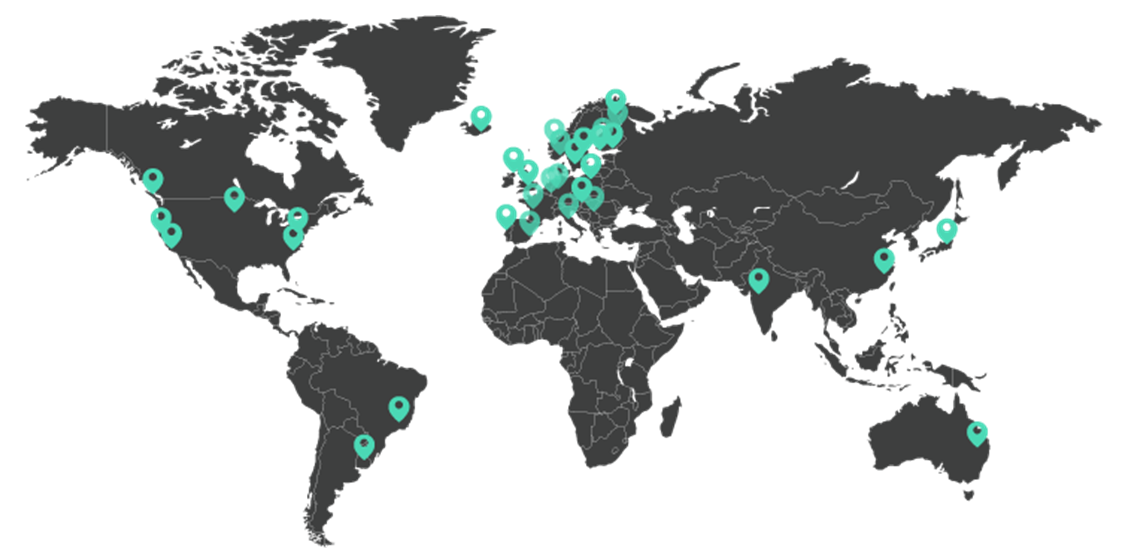By Brinter Ltd.
The Brinter® vision: accessible bioprinting for life sciences
Brinter® is a pioneer and trailblazer in the fast-growing field of bioprinting, the application of 3D printing technology to life sciences applications, particularly in regenerative medicine and tissue engineering.
Brinter’s vision is of improving worldwide healthcare through the widespread use of bioprinting technologies and its mission is to make the technology easily accessible for pharmaceutical companies, hospitals, universities, and research centers.
Streamlining Bio Applications
Brinter has developed a Bioprinter platform that can be used as a versatile tool for basic research in tissue engineering and regenerative medicine in a variety of applications, that include:
- Tissue Engineering: Replacing the 2D and 3D culturing of stem cells with bioprinting that allows researchers to fabricate simplified homocellular tissue models for basic research or to produce more complex 3D scaffolds with controlled spatial heterogeneity of physical properties, cellular composition, and ECM/biomolecule organization.
- Drug screening: Using bioprinted tissue models based on human cells to improve the drug discovery process by eliminating unsafe drug candidates at an earlier stage, thus speeding up the translation of new drugs into clinics, also eliminating the need for animal models in discovery and testing, with a significant reduction in preclinical trial costs.
- Cancer research: Bioprinting in-vitro tumor models based on human cancer cells to accurately reproduce the characteristics of human cancer tissue, allowing faster studies in complex interactions such as cancer cell dynamics during vascularization or metastasis of cancer cells. Bioprinted tumor models that use a patient’s own cancerous cells can also enable fully personalized anticancer drugs.
- Drug printing: Replacing centuries-old conventional pharmaceutical tabletting processes with bioprinted prescription pills formed from sets of biochemical inks customized for each patient, enabling medications that are fully personalized to patient dosing needs, genetic profile, taste preferences, etc. The technology also allows pills to be produced as individual batches on-site at the point of delivery.
- Bioprinted tissues and organs: Capitalizing on previous success in bioprinting a wide variety of tissues, such as blood vessels and neovascularized cartilage, to 3D bioprint entire functional organs such as kidneys, lungs, hearts, and livers that incorporate nerves, blood vessels, and lymphatic vessels capable of integrating with host systems, and created from the patient’s own cells to eliminate rejection and immunosuppression problems.
Individually optimized bioprinters
Brinter recognizes that 3D bioprinting is a fast-evolving and revolutionary technology in which each new study and application needs to feedback into design and in which each individual bioprinter platform needs to be configurable to specific user needs.
This has inspired a highly modular approach to Brinter® design and fabrication in which each Brinter Bioprinter is effectively custom-built and infinitely adaptable with a wide choice of individual tools and features.
Brinter technology features sets of proprietary fluidic controllers, actuators, high-frequency solenoids and valves, with precision sensors to allow the control of multiple flow parameters and manipulation of multiple fluids individually for active mixing, flow focusing, sorting, and structure generation.
Depending on a specific application, a different combination of Brinter technologies can be used, such as:
- Pneuma Cooled print head: Pneumatic print head with cooling for printing low to medium viscosity hydrogels, silicones and pastes, such as collagen or Matrigel.
- Pneuma Pro print head: Pneumatic print head with heating for printing low to medium viscosity hydrogels, silicones and pastes, such as hydrogels with living cells at +37 °C.
- Visco Tool print head: An endless piston principle tool that enables accurate printing of various viscous fluids and pastes, such as bioinks, biopaste, silicone, acrylate, epoxy resin, light-curing adhesives, waxes, ceramics, and abrasive pastes.
- Heated & cooled print bed: providing a temperature-controlled environment for the printed structure.
- UV/Vis LED module: Germicidal and photocuring module for automatic disinfection of the print bed and layer-by-layer photocuring of light sensitive bioinks, such as GelMA and UV silicone.
- MicroDroplet print head: Solenoid valve actuated dosing system enabling precision dosing of droplets from 10 μL to 1000 μL, including dispensing of various liquids, such as cell suspension, cell media, drugs, growth factors, and crosslinking agents.
- Laminar flow unit: Directed airflow to ensure a sterile working area, both inside and around the bioprinter cabinet, allowing researchers to prepare and mix bioinks in sterile conditions close to the bioprinter.
Combining technology with research
Brinter’s bioprinter platforms and technologies are the culmination of years of 3D printing expertise and research, incorporating learnings from its own R&D programs as well as inputs from a wide network of clients, collaborators and partners around the world. The company is currently researching new areas of interest based on R&D results, focusing on areas such as personalized medicine, bioimplants, organs, nutrition, etc.
Brinter has developed its multi-material 3D bioprinter, materials, and protocols in close cooperation with customers to solve prior challenges of bioprinting and to provide solutions that are fully scalable from laboratory use to multi-device production lines.
Its service offerings include the sale or lease of Brinter 3D bioprinters, materials, protocols, along with contract bioprinting.
Resources
Click on About Brinter to learn more.
Click on Bioprinting Applications for further information.


















